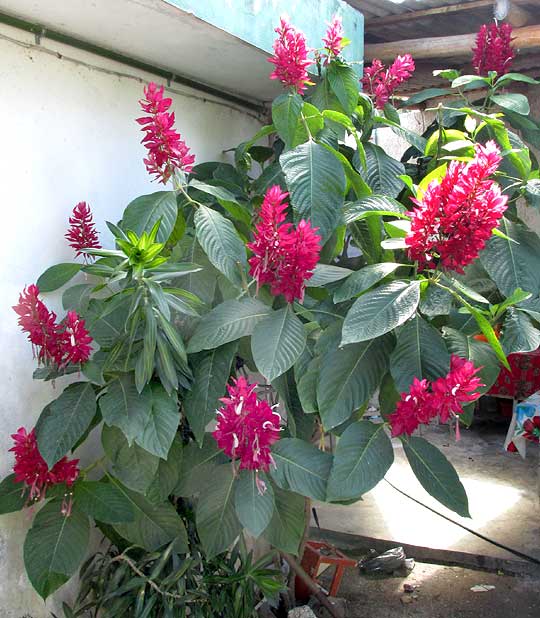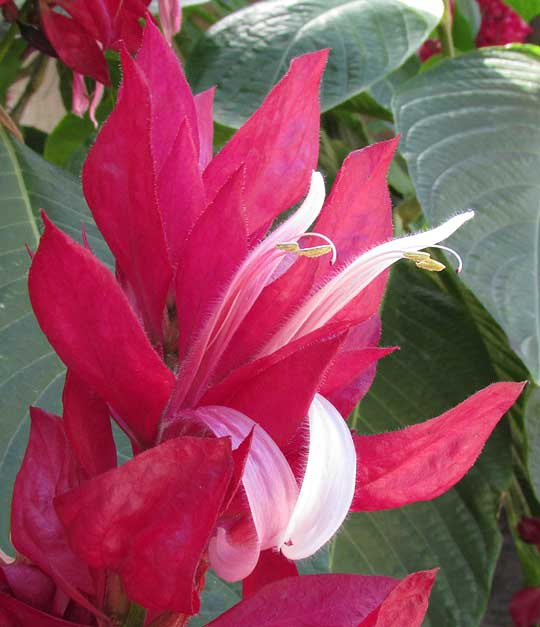Excerpts from Jim Conrad's
Naturalist Newsletter
from the January 25, 2015 Newsletter issued from Río Lagartos, on the Yucatan Peninsula's northern coast (~N21.60°, ~W88.16°), Yucatán state, MÉXICO
BRAZILIAN RED-CLOAK
Everyone knows that ornamental plants often shrivel and die no matter how tenderly you nurse them. It's also true that sometimes plants that have been rooted in places that seem completely inappropriate for them thrive and turn out beautifully. That was the case this week with a gorgeous individual planted too close to a wall and below an overhang in a shadowy, mostly paved, junky courtyard behind a restaurant where hardly anyone every sees it. About eight feet tall (2.5m) and looking more robust and healthy than any plant of its kind found on the Internet, below you can see it competing with weeds in its tiny plot of gravelly soil:

A close-up of its white-lipped flowers emerging from among a flame-like cluster of pinkish bracts, or modified leaves, is shown below:

Here are the field marks making it easy to figure out which plant family we have here:
These field marks guide us to the big, mostly tropical Acanthus Family, the Acanthaceae. Once we know the family, an image-search can be done on the Internet using such keywords as "Acanthaceae pink bracts." When I did that, the first two thumbnails showed images of our plant.
And those plants were identified as the Brazilian Red-cloak, MEGASKEPASMA ERYTHROCHLAMYS, a semi-woody shrub that despite the Brazil in its name is native to rainforests of Venezuela, Costa Rica, Nicaragua and El Salvador. I just don't know how a rainforest plant can look so healthy in such an environment as this one's.
Megaskepasma is a genus I'd never heard of. One reason for that is that it embraces only this single species. Earlier our plant was considered a member of the big, easy-to-remember and well known genus Justicia, but splitters banished it from there largely because our plant lacks "cystoliths," which are tiny, rock-like grains embedded in the plant's tissue, maybe to dissuade animals from eating them, and which are typical of plants in the Acanthus Family.
Whatever the taxonomic situation, it was a pleasure meeting this exotic plant singing its pretty song in such a hidden, cramped, unworthy setting.